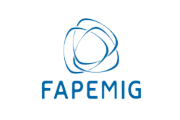Geospatial data quality: consistency a topological analysis in the coverage land mapping of Curitiba city – PR
DOI:
10.22238/rc2448269220181601233247Keywords:
GIS. Cartography. Topology.Abstract
Due to constant improvement of geographic data processing techniques there are many research and applications of these techniques in various areas of knowledge. However, the need for validation of these data has received little attention, especially in academia, endangering the accuracy and trustworthiness of studies. Among the parameters used for the quality control of geographic data, this study aimed to verify the topological consistency of data related to land cover mapping of city Curitiba, in Paraná State, Brazil, in the original scale of 1: 35,000. This parameter is distinguished from the other by the need to quantify the area of each mapped class. It was found that despite this mapping have been performed on a scale considered detail, the data showed topological inconsistency. Even if these errors can be insignificant, they point to possible differences in the quantification of the areas compared to its actual size, especially for petty unclassified polygons or polygons that exceed the sorting area. Finally, it is worth noting that as the spatial information presented in a scientific work can be the basis for others, it is critical to have attention on the reliability of the data so that potential errors are not replicated.
Downloads
References
BARROS, E. R. O.; CARNEIRO, A. F. T. Uma Proposta de Controle de Qualidade de Informações Cadastrais de Imóveis Rurais. Revista Brasileira de Cartografia, n 65/2, p. 265-581, 2013.
CÂMARA, G.; DAVIS, C.; MONTEIRO, A. M. V.; MEDEIROS, J. S. DE. Introdução à ciência da geoinformação. Introdução à Ciência da Geoinformação, p. 345, 2001. Disponível em: <http://www.dpi.inpe.br/gilberto/livro/introd/%7B%25%7D5Cnwww.dpi.inpe.br/gilberto/livro>. Acesso em: 20/03/2017.
DAVIS, B. E. GIS: a visual approach. 2ª ed. New York: Thomson Learning, 2001.
ESRI. Geodatabase topology rules and topology error fixes. Disponível em: <http://resources.arcgis.com/en/home/>. Acesso em: 22/03/2017.
LONGLEY, P. A.; GOODCHILD, M. F.; MAGUIRE, D. J.; RHIND, D. W. Sistemas e Ciência da Informação Geográfica. Bookman, 2009.
ROCHA, M. P. C. Desenvolvimento de referencial teórico para um sistema de informações gerenciais (SIG) para parlamentares e assessores na Câmara Legislativa do Distrito Federal: em busca de um modelo conceitual. Ciência da Informação, v. 32, p. 80–88, 2003.
ROGERSON, P. Métodos estatísticos para geografia: um guia para o estudante. 3ª Ed. Porto Alegre: Bookman, 2012, 348 p.
ROSA, R. Geotecnologias na Geografia aplicada. Revista do Departamento de Geografia, v. 16, p. 81–90, 2005. Disponível em:
<http://citrus.uspnet.usp.br/rdg/ojs/index.php/rdg/article/view/55>. Acesso em: 13/03/2017.
SANTOS JUNIOR, W.M.; RIBEIRO, G.P. Qualidade dos dados geográficos disponibilizados em ambiente de sistema de informação geográfica na internet. In: SIMPÓSIO BRASILEIRO DE CIÊNCIAS GEODÉSICAS E TECNOLOGIAS DA GEOINFORMAÇÃO, 4., 2012, Recife.. Anais... Recife: SIMGEO, 2012 p. 01-08.
SILVA, A. B. Sistemas de Informações Geo-referenciadas: conceitos e fundamentos. Campinas: Editora da Unicamp, 2003.
THEOBALD, D. M. Understanding Topology and Shapefiles. ArcUser Online, 2001. Disponível em: < http://www.esri.com/news/arcuser/0401/topo.html>. Acesso em: 09/04/2017.
VEREGIN, Howard. Data quality parameters. Geographical information systems, v. 1, p. 177-189, 1999.
WEBER, E.; ANZOLCH, R.; LISBOA FILHO, J.; COSTA, A. C.; IOCHPE, C. Qualidade de dados geoespaciais. Porto Alegre: URGS – Instituto de Informática, 1999. 37 p. Relatório Técnico.
Published
How to Cite
Issue
Section
License
Copyright (c) 2018 Revista Cerrados

This work is licensed under a Creative Commons Attribution-NonCommercial-NoDerivatives 4.0 International License.
In this journal, the copyrights for published articles belong to the author (s), with the rights of the first publication belonging to Revista Cerrados. The articles are publicly accessible, free to use, their own assignments, educational assignments and non-commercial applications.


















